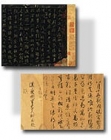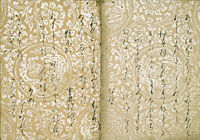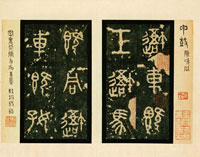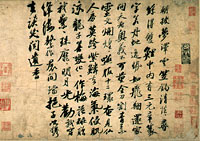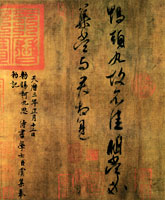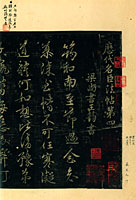There are many different aspects to calligraphy: the content of what is written; the skill or otherwise of the calligraphy as such; the significance of the work's transmission to the present.
Unfortunately, some people seem to shun calligraphy on the grounds that, for example, the characters are too stylized or deformed for them to be read easily, or that the poems or prose thus written are difficult to understand. However, the appreciation of calligraphy is not solely a matter of reading the script or correctly interpreting the Chinese-style poems or the prose that they represent.
Calligraphy presents a variety of beauties: of form, of the flow of the brush-strokes, of the spatial disposition of the characters and their relationship to the space surrounding them. There is also the attraction of the materials used -the paper, and the varying hues of black ink. Besides this, there is the incidental beauty created in the forms of the ideograms and the overall effect when they are written in a continuous flow, as well as by the spreading of the ink or the gradual drying of the ink on the brush, and by the varying pressure of the brushwork. Yet another characteristic of calligraphy is that, by tracing the successive strokes of the brush, one can experience for oneself something of the esthetic emotions of the calligrapher at each moment. One does not necessarily have to apprehend every element of a work at the same time -there is plenty to savor, even in a single aspect.
The specimens of calligraphy from the past that survive today have done so because of their significance in religion, literature, education, or everyday life. There is pleasure, surely, in contemplating this miracle whereby they have been preserved for a thousand years -sometimes, even, since before the beginning of the Christian era. Appreciation of calligraphy transcends its age; at the same time, the work of each individual calligrapher clearly shows the special characteristics and atmosphere of the period in which he lived. Careful contemplation also reveals subtle differences between the calligraphies of Japan and China -the lyricism, whimsicality and intuitiveness of the former, the architectural quality, massiveness and logical strength of the latter.
Calligraphy is rated as accomplished or otherwise for various reasons. But the most important quality in a successful work is a certain sense of grace and dignity. An air of distinction and individuality are the principal charms of the art. "Calligraphy is the man," the saying goes, and the works of those calligraphers whose names have gone down in history are faithful reflections of particular personalities. The best way to enjoy a piece of calligraphy is to contemplate it unhurriedly so as to realize within oneself, as one traces its rhythms, the attitude to life and the esthetic emotions experienced by the author in creating it. |

